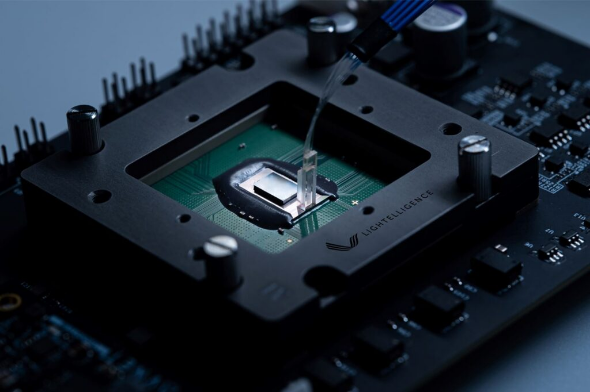Connection to DriversCloud Create a DriversCloud.com account Reset your DriversCloud.com password Account migration
Lightelligence presents its new work in photonic processors
For many industry players, photonic computing should make it possible to achieve revolutionary computing power.
The so-called photonic (or optical) computers may still seem like science fiction, and it is true that at present no system is really exploited, apart from prototypes used in research centers. However, progress is numerous and recent advances even allow us to imagine a deployment not so far away. Before talking about this, it is important to remember that the first works in photonic computing go back to the 70s. Little by little, teams of researchers tried to innovate and in the 90's, Alan Huang's team for Bell Labs was the first to build an optical computer: composed of lasers and mirrors, it was however only good for addition.
Most of the industry giants have continued to work on the issue and companies like HP or IBM have their own research teams. However, it is the start-up Lightelligence that has recently made the most remarkable advances... at least of those officially presented! Founded in 2017, the startup unveiled its first project - Comet - two years later. The beast was already fully functional, but only integrated 100 optical devices.
Logically, Lightelligence took advantage of this first success to improve its "formula" and only a few days ago, the startup presented a new computing engine, the PACE gas pedal, whose acronym stands for Photonic Arithmetic Computing Engine. This new gas pedal is much more ambitious than its predecessor, with a total of 12,000 optical devices connected within what looks like a classic processor. The latter is clocked at 1 GHz and takes place on a PCB that has been used to perform various tests.
Lightelligence explains that on very specific calculations, its PACE gas pedal is capable of 100 times better performance than the GPU of an NVIDIA GeForce RTX 3080: Lightelligence takes the example of NP-complete problems. In this very specific case, the start-up decided to confront its gas pedal with the Ising model, used in thermodynamics. This is where it was discussed to be 100 times faster than the GPU of the RTX 3080. Even better, compared to a system designed specifically for this task by Toshiba, PACE is even 25 times faster.
Quoted by TechPowerUp, the startup is no stranger to pride in its progress in photonic processors. It explains that the use of PACE on the Ising model is the promise of ever more varied tasks for this type of processor, which to many minds had a purpose only in artificial intelligence. According to Lightelligence, other fields of endeavor can benefit from advances in photonic processors such as " materials science, bioinformatics, thermodynamics, cryptography, power grid optimization, circuit design, and much more."






